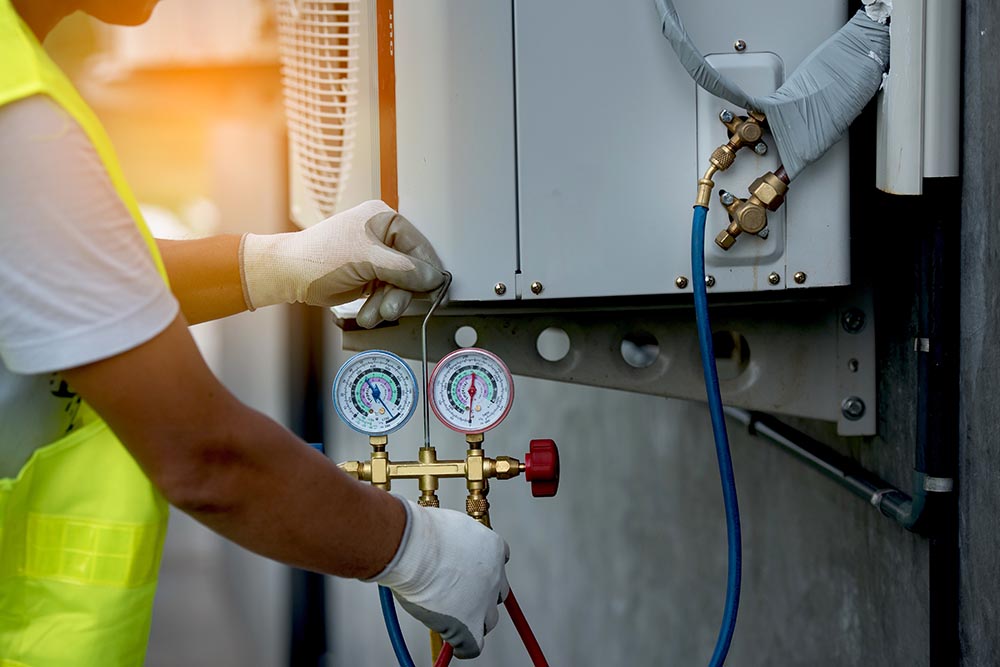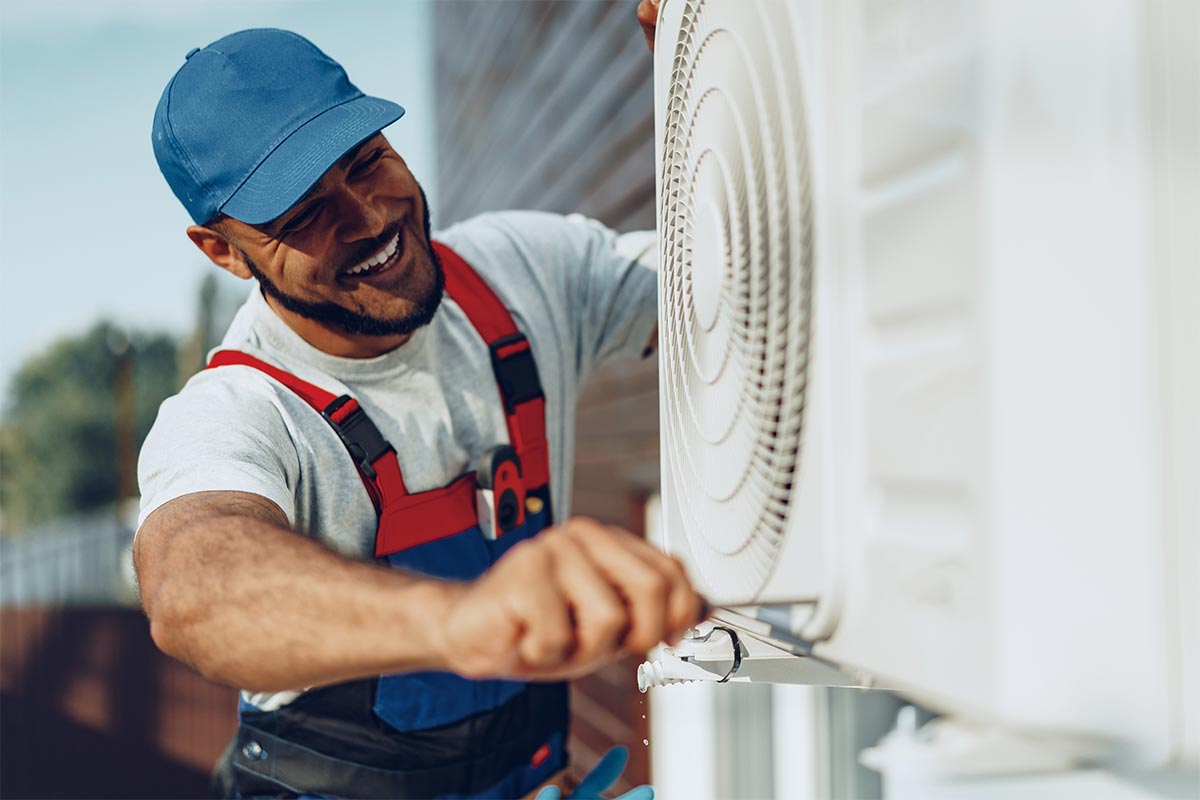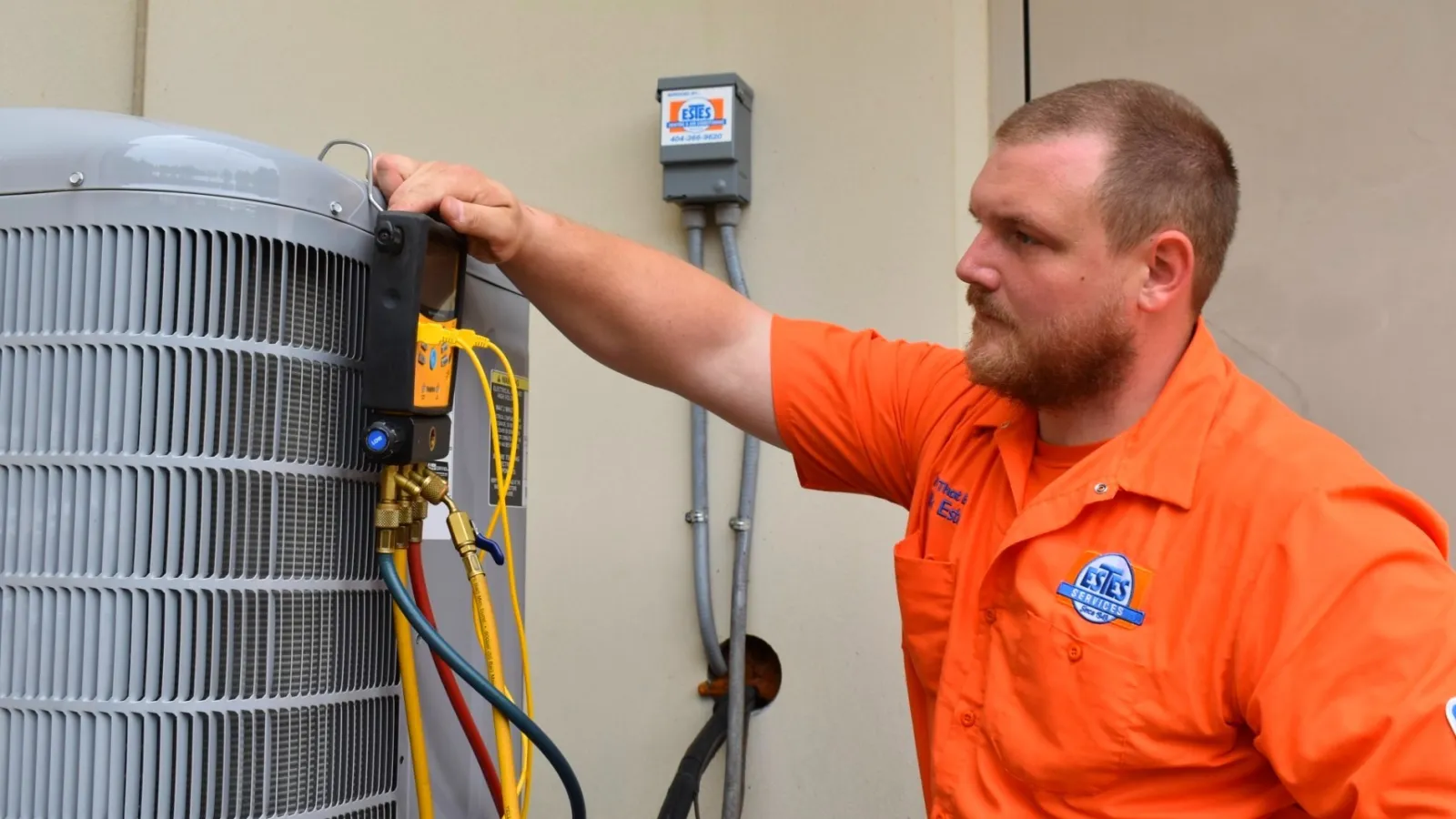Exactly How a Heat Pump and Heating System Interact to Optimize Your Home's Home heating Effectiveness
Understanding just how a warmth pump and furnace collaborate is essential for property owners seeking efficient home heating options. Each system has its staminas, offering a well balanced strategy to home comfort. The heatpump masters moderate temperatures, while the heater provides fast warmth throughout extreme cold. This synergy not just minimizes power costs however likewise enhances the lifespan of both home appliances. What elements affect this partnership, and how can home owners optimize their benefits?
Comprehending Warm Pumps: Exactly How They Function
Several individuals might be strange with their inner workings, warmth pumps play a crucial duty in modern home heating systems. These gadgets operate by transferring heat from one location to an additional, utilizing the principles of thermodynamics. In colder months, a heat pump removes warmth from the outside air, ground, or water, and transfers it inside to warm up the home. On the other hand, during warmer months, it can reverse the procedure, functioning as an air conditioning system by removing warmth from inside to the outside.Heat pumps include an evaporator, development, compressor, and condenser shutoff. The cooling agent within the system soaks up heat as it evaporates at low temperatures and pressures. The compressor then raises the stress and temperature of the refrigerant, allowing it to release heat as it condenses. This reliable process can considerably reduce energy intake contrasted to typical home heating techniques, making heatpump a sustainable option for environment control in homes.
The Role of Heating Systems in Home Heating
Heating systems play a crucial duty in home heating by offering a reputable resource of heat during the chillier months. They operate by producing warmth through combustion or electric resistance, distributing it throughout the home by means of ducts or glowing systems. The performance of a heating system is typically gauged by its Annual Fuel Usage Performance (AFUE) rating, which suggests exactly how successfully the unit transforms gas into heat.Furnaces can use numerous power sources, including natural gas, electrical energy, oil, or lp, permitting homeowners to select the most appropriate option for their demands. Unlike warmth pumps, which may battle in extreme chilly, furnaces keep consistent efficiency, making sure that indoor temperature levels stay comfortable no matter exterior conditions. In addition, modern furnaces typically come equipped with sophisticated technology, such as clever thermostats and variable-speed blowers, enhancing their effectiveness and responsiveness. This adaptability makes furnaces a critical component in all-encompassing home heating approaches.

Benefits of Using Both Systems With Each Other
Incorporating the toughness of both heaters and warm pumps can cause a much more effective and effective home heating option. Utilizing both systems permits home owners to make the most of the heat pump's power performance during milder temperatures while counting on the heater for more severe cold conditions. This twin strategy can considerably lower power expenses, as heat pumps eat much less power than standard heating approaches when temperature levels are moderate.Additionally, making use of both systems together can enhance convenience levels in the home. Warmth pumps can give constant, even heating, while furnaces can swiftly raise ambient temperature levels when required. The combination of both systems can expand the lifespan of devices by lowering wear and tear on each system, as they share the work. Eventually, home owners can delight in a well balanced, cost-efficient heating remedy that readjusts effortlessly to differing weather, guaranteeing a cozy and inviting home throughout the winter season months.
Just How Warm Pumps and Furnaces Complement Each Various Other
They develop a complementary home heating system that makes the most of effectiveness and comfort when property owners incorporate warmth pumps and furnaces. Heat pumps operate by transferring warm from the outside air or ground, making them extremely reliable in modest environments. They succeed throughout milder temperatures, providing cost-effective heating. Conversely, heating systems generate warm with combustion or electric resistance, delivering strong, immediate warmth throughout extreme cold conditions.The mix of these 2 systems permits dynamic modifications based on temperature fluctuations. During warmer months or milder winter season days, the warm pump can take the lead, saving power and lowering prices. As temperature levels decline, the heating system can flawlessly involve, ensuring consistent heat throughout the home. This harmony not just enhances energy use however likewise improves the life expectancy of both systems, as each device runs within its optimal performance range. With each other, they produce a well balanced setting that adjusts to varying environment needs.
Maximizing Effectiveness: Tips for Homeowners
Property owners can boost their home heating performance with several sensible strategies. Developing a routine maintenance timetable, integrating smart thermostat modern technology, and carrying out efficient insulation and securing remedies are essential actions. These actions not just boost comfort however also decrease power costs.
Routine Upkeep Schedule
To assure maximum home heating efficiency, developing a regular upkeep routine is important for any kind of home. Home owners ought to focus on regular examinations of both heatpump and furnaces to establish peak efficiency. This includes here transforming air filters every one to three months, as clogged up filters can significantly reduce effectiveness. In addition, scheduling professional upkeep at the very least annually allows service technicians to determine and resolve prospective problems prior to they escalate. Property owners must likewise clean the warm pump's outside device to avoid particles build-up that can prevent airflow. By adhering to a routine maintenance routine, house owners not just improve their heater' efficiency but also expand their lifespan, bring about better convenience and minimized power prices throughout the colder months.
Smart Thermostat Assimilation
Incorporating a wise thermostat into a home heating system can significantly enhance energy performance, especially as it enables exact control over temperature level settings. These devices can learn the homeowner's timetable and choices, immediately changing the temperature to maximize convenience while reducing power usage. They can decrease heating throughout times when the home is vacant, lowering unneeded consumption. Several wise thermostats likewise provide real-time power usage information, enabling homeowners to make enlightened decisions concerning their heating behaviors. Furthermore, remote access by means of smartphone applications enables users to change settings from anywhere, making sure the home is warm upon return. Overall, wise thermostat assimilation not wikipedia reference only enhances comfort however considerably adds to power cost savings and performance.
Insulation and Sealing Solutions
Smart thermostats play an essential role in energy performance, but their efficiency can be substantially improved by correct insulation and sealing services. House owners must prioritize protecting walls, attics, and floorings to minimize heat loss. Premium insulation products, such as spray foam or fiberglass, can greatly original site improve thermal resistance. Additionally, securing spaces around doors, ducts, and windows prevents chilly air seepage and warmth retreat. Weatherstripping and caulking work methods for attending to these leakages - heat pump replacement ooltewah tn. Normal examinations for air leaks, along with the use of blower door examinations, can help recognize trouble locations. By purchasing insulation and sealing, home owners can maximize the efficiency of their heating unit, ultimately causing minimized power usage and lower energy bills
Usual Misconceptions Regarding Heat Pumps and Furnaces
What misunderstandings border heatpump and heating systems? Numerous people mistakenly believe that heatpump are ineffective in cooler environments. Actually, contemporary warm pumps are designed to run effectively also in low temperatures, giving trustworthy heating throughout wintertime. Another usual myth is that heaters are always a lot more effective than heatpump. Nonetheless, this depends on the specific power sources and performance rankings of the units in inquiry. Some may also think that making use of both systems simultaneously is unneeded, but as a matter of fact, this mix can optimize home heating effectiveness, particularly during severe weather. In addition, people commonly assume that warm pumps call for continuous upkeep, when actually, they have similar maintenance needs to standard home heating systems. By exposing these misconceptions, property owners can make more enlightened decisions concerning their home heating alternatives, eventually leading to boosted comfort and power performance in their homes.
Maintenance Factors To Consider for Combined Solutions

Frequently Asked Inquiries
Can Warm Pumps Work Successfully in Exceptionally Cold Climates?
Heatpump can have a hard time in very cold environments because of lowered effectiveness and warm extraction restrictions. Improvements in technology have actually led to versions made for much better performance in such conditions, improving their practicality in extreme environments.
For How Long Do Heat Pumps and Furnaces Generally Last?
Warm pumps normally last 15 to two decades, while heaters have a life expectancy of 15 to three decades. Normal upkeep can prolong their durability, making sure reliable procedure and lowering the demand for premature substitutes.

What Is the Ordinary Expense of Putting Up Both Solutions?
The average expense of setting up both a heatpump and a heater generally varies in between $5,000 to $10,000 - heat pump installation ooltewah tn. Variables influencing this cost include system size, installment intricacy, and regional labor rates
Are There Tax Obligation Motivations for Using Energy-Efficient Home Heating Systems?
Lots of property owners make inquiries about tax motivations for energy-efficient heating systems. Numerous government and state programs typically supply credit reports or rebates, motivating the fostering of lasting technologies to decrease energy consumption and promote environmental obligation.
Just how Do I Choose the Right Size Heatpump and Heating System?
Selecting the appropriate dimension warmth pump and furnace involves computing the home's square footage, considering insulation high quality, and assessing neighborhood climate. Consulting a professional can guarantee optimal system performance and power effectiveness based upon certain requirements. ductless mini splits. Recognizing just how a warmth pump and heater job together is crucial for house owners looking for effective heating solutions. In cooler months, a warmth pump essences warm from the outside air, ground, or water, and transfers it indoors to heat the living area. When house owners integrate heat pumps and furnaces, they produce a complementary home heating system that maximizes performance and comfort. Warm pumps operate by moving warm from the outside air or ground, making them highly reliable in moderate environments. Warm pumps can struggle in extremely cold environments due to minimized efficiency and warmth removal restrictions